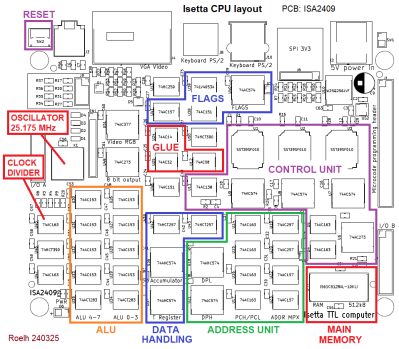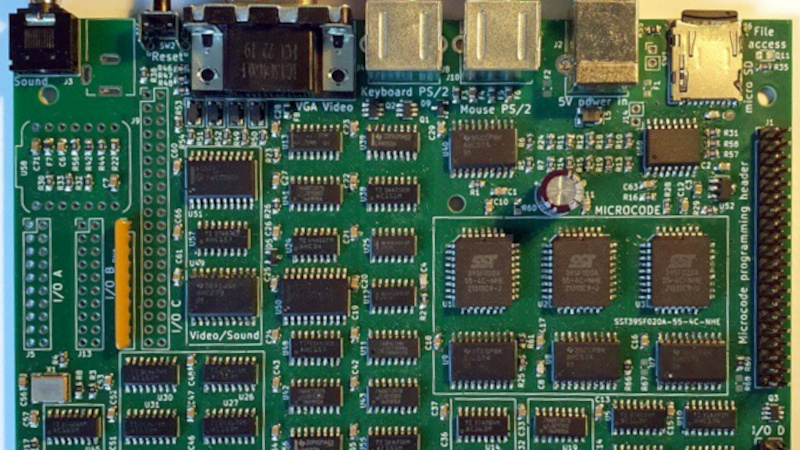Our Hackaday colleague [Bil Herd] is known for being the mind behind the Commodore 128, a machine which famously had both a 6502 and a Z80 processor on board. The idea of a machine which could do the job of both those processors in hardware while containing neither would have blown the mind of any 1980s computer enthusiast, yet that’s exactly what [Roelh]’s Isetta TTL computer does. It’s an extremely clever design whose targeted microcode allows the processor-swap trick, and since he’s brought it from prototype to production and has it running SymbOS since we last saw it, it’s time we gave it another look.

The video below the break shows the machine in action, with the Windows 95-like SymbOS GUI running a series of sound tests in the emulated AY-3-8910 sound generator, as well as a Lemmings-like game. It also runs Sinclair ZX Spectrum software, giving it access to a huge library.
We were lucky enough to see some of this in person when we encountered it for a second time on our travels during the summer — and it’s just as impressive in the real as it looks in the video. The feeling really hits you of how this would have blown away anything on the 8-bit market in 1985, made more impressive by the silicon in use being not too far from what was available at the time.
We’re told you can now buy one for yourself as a kit, and we’re looking forward to seeing it generate an ecosystem. We’re particularly curious as to whether that retargetable microcode could allow it to support other archetctures of the day.
Our original coverage can be read here, and we’ve also touched upon SymbOS.
















This is what the Pi should have been, to train youngsters into computer tech (note: computer tech, NOT computer operations).
This is on my shopping list… :-)
R-Pi has GPIO and it can run Python. This thing must be programmed in some ancient IDE like Bascom.
Like I said…”tech”, not operation.
Isetta is not going to compete with any current technology, but it has the ability to teach the basic technology. CPUs have operated on the same principals for over 50 years…
CPUs have gone through two major shifts in the time since this style of computer was popular. (remember, home 8-bit systems trailed FAR behind the curve) First the RISC revolution brought significantly simpler systems and introduced pipelining, even to CISC processors that gained instruction decoding and pipelined their uOP engines. Then superscalar processing blew the doors off the scalar one-instruction-per-clock limit, and made CPU architecture the norm which are completely alien to anything like this.
There’s little that this can teach that couldn’t be taught by a microprocessor trainer in the 1970’s predating both of those shifts. Maybe it can teach mcirocoding, but it’s without the corresponding CPU datapath design when it’s predefined in a kit like this.
For my 2 cents, a bunch better educational system would be something based around a RISC CPU and minix. It’s both much closer to the modern way of doing things while still something someone could absolutely build themselves in both processor and OS. It’s closeness to modern systems also makes porting and transference of skills much easier.
Looks like a great intro to cpu architecture and maybe even system design…
Gotta get our embedded system engineers from somewhere.